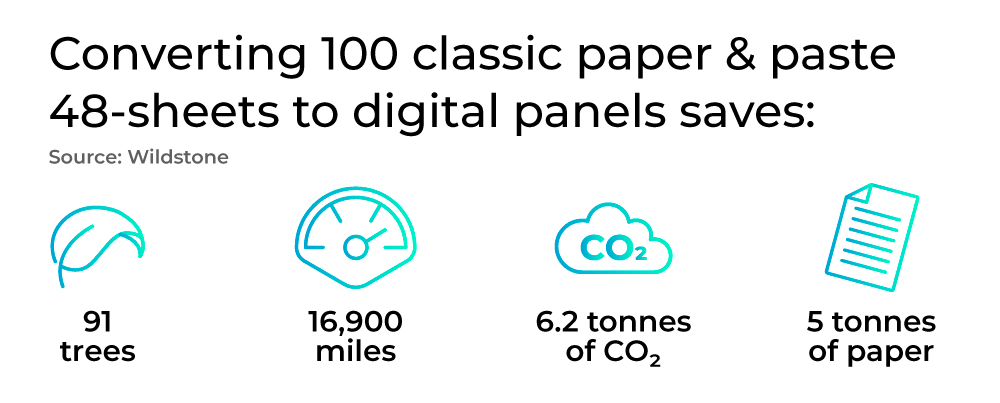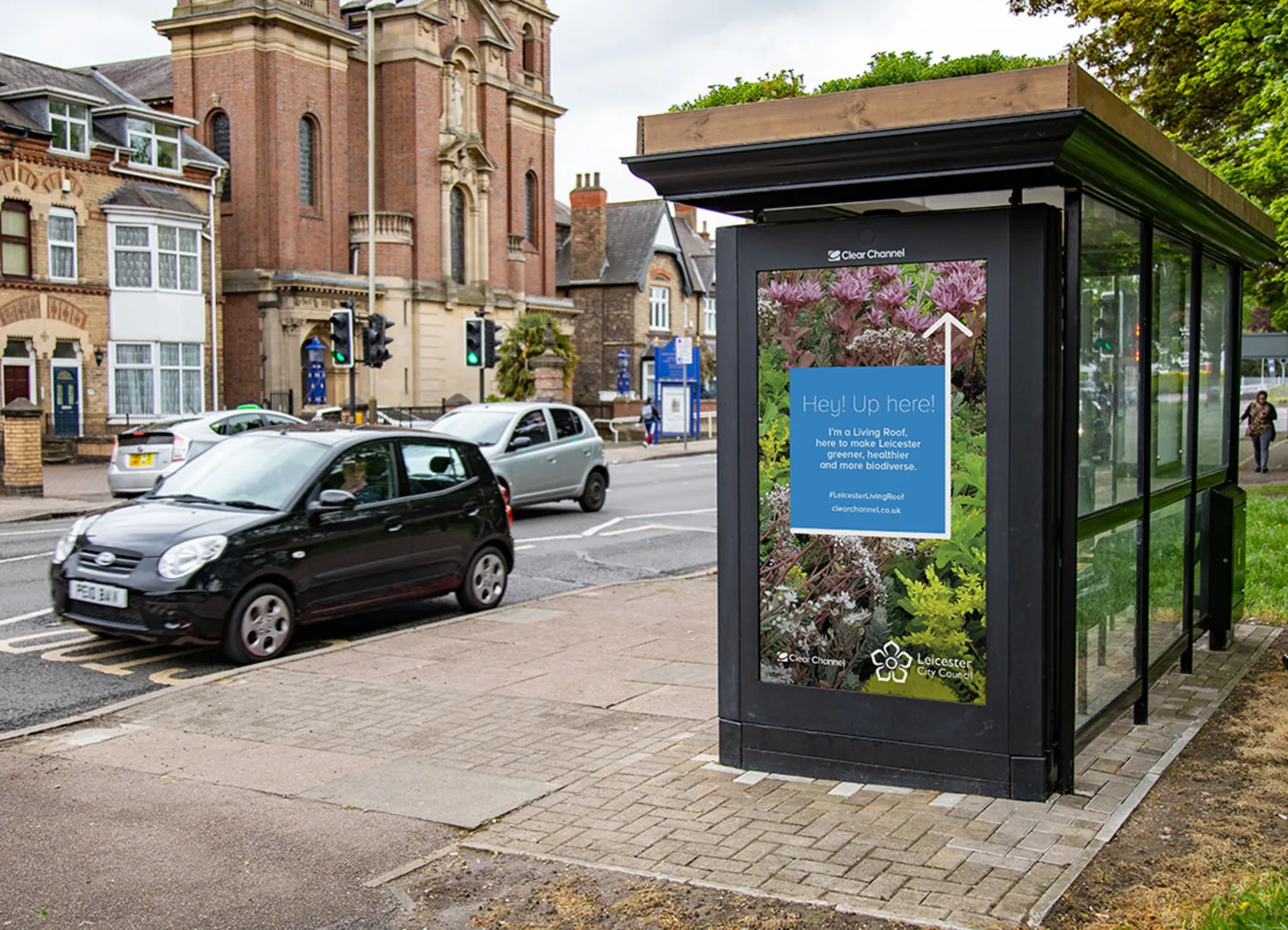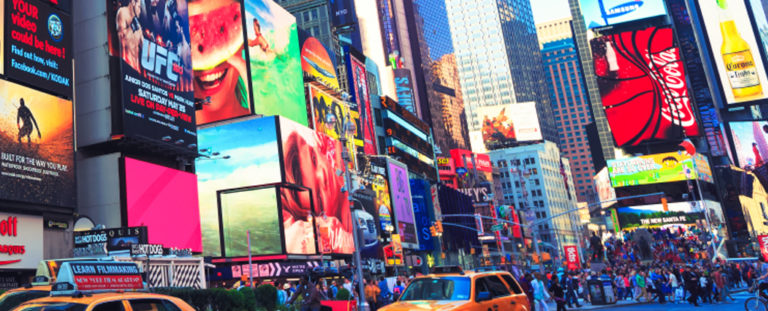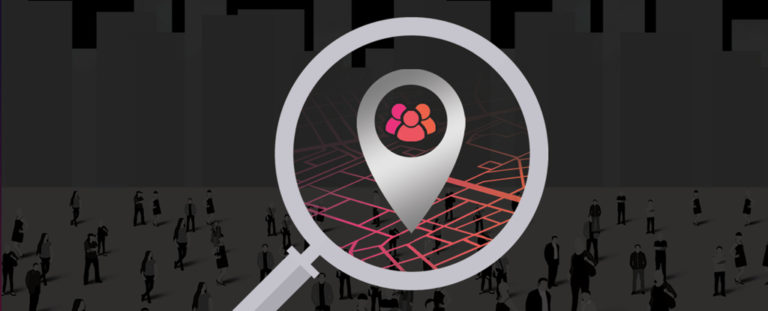Advertising Goes Green with DOOH
Published: March 24, 2023
Sustainability is becoming a pressing issue as the seas rise and the planet warms. As a result, more people are starting to recognize the impact of their carbon footprint. In turn, they are expecting brands to follow suit, demanding corporations take responsibility for their actions and do their part to combat global warming. According to Forbes, 88% of the public said they want brands to make a difference and improve their sustainability initiatives.
The advertising industry is not exempt from the climate conversation. Did you know? A single ad campaign generates 70 tons of CO2 equivalent emissions, comparable to seven people in a year. Taking steps to mitigate and curb their carbon impact is essential for brands to make a positive contribution to the environment. Fortunately, the out-of-home sector is adopting a more environmentally friendly approach with the help of digital-out-of-home (DOOH) advertising, which offers a more sustainable alternative to traditional print and display advertising.
The Environmental Difference Between OOH and DOOH
Transitioning from static to digital eliminates air pollution, reduces reliance on fossil fuels, and minimizes the excessive maintenance required for traditional OOH ads. This includes the production, transportation, and eventual removal of materials, which can have a significant environmental impact. DOOH, on the other hand, accommodates multiple ads on one display without requiring surplus materials. And DOOH has a longer lifespan, meaning the environmental impact of extracting materials to create new screens is diminished.

But what about energy use?
Digital displays do require a fair amount of power to run. But, out-of-home industry leaders are committed to implementing eco-friendly solutions and reducing energy consumption.
Moving to LED:
Many media owners are making the switch to LED fixtures. Not only do LED signs cost less than 10 percent per thousand impressions compared to any other advertising medium, but they also reduce energy consumption by 75% compared to incandescent or fluorescent lighting. Lamar, the premier outdoor advertising company, has installed over 78,000 LED lights on billboards nationwide, resulting in a 73% reduction in energy use for those structures.
Renewable green energy is having a moment:
As sustainable energy sources gain momentum, an increasing number of media owners are embracing solar and alternative energy solutions for their operations. For example, The LED studio, a pioneering digital signage firm, has partnered with VOD Visual to introduce Aegis Pro - a solar-powered display with a special emphasis on DOOH applications. The display is engineered to be fully waterproof, with a top-mounted that comes fully equipped with a powerful 20AH battery pack. This makes it an excellent and remarkable choice for sustainable, on-the-go advertising campaigns!
Added-on Environmental Benefits:
Sustainable DOOH Furniture:
Street Furniture is getting an environmental upgrade with sustainable and even self-sustaining designs. For example, with the help of ecologists, Clear Channel is supporting bees and adding greenery into local communities with Living Roofs. Located at various bus stops in the UK, Living Roofs are made up of gravel, compost mix, grass, and 13 native flowers that sit above DOOH transit screens.

Creating Smarter Cities:
Sustainable digital out-of-home advertising can improve quality of life and create more informative, smarter cities. Large metropolitan cities like New York City and Boston are engulfed with digital displays showing weather updates, route information, train schedules, and bus delays. But, even more exceptional, DOOH screens are accelerating cities to a net zero economy.
Green City Solutions and Visual Art collaborated to address the issue of air pollution in urban areas while also generating media interest. Together, they developed CityBreeze, which combines small cell and metering technology with a 75-inch LED screen and a large moss wall. The moss wall has the ability to revitalize the air and filter out more than 80% of fine dust particles, while the LED screen provides a platform for targeted messaging and advertising.
Climate issues are top-of-mind amongst consumers and brands alike. Advertisers not only need to make an effort to incorporate eco-friendly practices in their business values, but also in their advertising objectives. Digital out-of-home advertising is a leap in the sustainable direction. So what are you waiting for? Switch to a more environmentally friendly marketing approach by utilizing DOOH. Contact us at concierge@adomni.com.
Written By: Julia Cramer
To get the latest updates on out of home advertising, digital marketing and technology, follow us on:
Or sign up for our newsletter.






